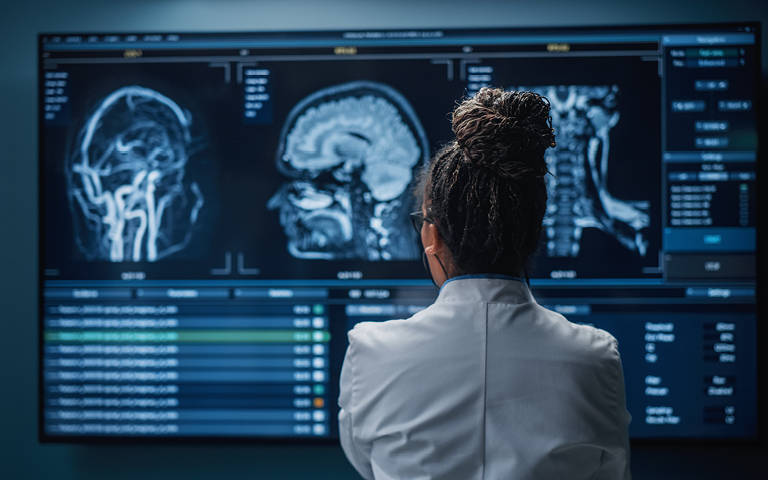From the Chair of the Commission on Economics
Gregory N. Nicola, MD, FACR
As members of a specialty that continues to reinvent itself, we all regularly face problems in radiology that are difficult to solve, like those related to workflow, efficiency and quality. While the types of challenges we face are similar, local circumstances are different enough that there are no off-the-shelf, plug-and-play solutions to these types of problems.
Chances of successfully solving such problems are greatly enhanced by the use of a systematic approach: defining and investigating the problem, measuring performance, and then developing, testing and refining solutions until the problem is solved. While this approach is not rocket science, it requires discipline, experience and support that is unfamiliar to most radiologists, technologists and administrators.
Through a generous grant from the Gordon and Betty Moore Foundation, the ACR is working to help fill this gap through two related initiatives: the ImPower program and the ACR Learning Network.
Through the ACR ImPower program, teams learn to tackle complex but solvable problems. It is patterned after Stanford University’s Realizing Improvement through Team Empowerment (RITE) program, which has graduated more than 2,000 participants who have completed nearly 300 major improvement projects across the medical center. The program teaches well-developed, structured improvement methods while also empowering teams to solve problems that make sense for their local institution. The ACR Learning Network uses the ImPower program’s training and support platform and it connects local teams across the country that are solving similar problems.
 |
The Learning Network initially started with four improvement collaboratives, focused on especially thorny challenges in radiology: breast positioning in mammography, prostate MR image quality, recommendations follow-up and lung cancer screening. These collaboratives serve as a nationwide community where teams from different institutions provide guidance, share tips and encourage and challenge each other on specific topics. We have also launched a General Improvement Group, where practices can send teams solving any type of problem to receive the same training and support.
We are now in our third cohort, with 323 participants in 38 teams having graduated in the first two cohorts and 15 teams now in Cohort 3. The results thus far have been highly encouraging. We are seeing reliable improvement from participating teams on all the topics, especially in breast positioning and prostate MR. One participant shared this: “Participating in the ACR Learning Network’s Improvement Collaborative for recommendations follow-up has been an eye-opening experience. Though my team and I have worked in this field for a decade, we’ve learned new skills and techniques to improve the work we’re doing and make a measurable difference in the lives of our patients.” Learnings from these programs are beginning to be published to more broadly disseminate knowledge developed in the program.
Moreover, participants find the experience highly rewarding. “The program has helped me realize that I can bring about meaningful improvement. That I do have a voice even if I am viewed as just a technologist,” shared one participant. Another stated, “The knowledge and inspiration that comes from learning from the best has been so powerful and motivating. We have gained a new creative and innovative mindset that has resulted in improved quality imaging by being a part of this improvement collaborative experience!”
Several organizations have sponsored multiple participating teams, using the program as a vehicle for leadership training. They are finding that the program deepens relationships between radiologists and their organizational personnel, supporting radiologists as team leaders. As one participant shared, “The program fostered closer relationships within the team and within the breast imaging division. With these closer relationships, it now feels more possible to bring about meaningful improvement in the department both with the current project and with future improvement projects.”
The ACR Commission on Quality and Safety recognizes that quality is found in the details of the work carried out by skilled radiological professionals. But sometimes it also requires coordinated, systematic problem-solving methods. We are committed to supporting the widespread use of these methods, for the benefit of our organizations and our patients. We hope you will join us.
We invite all radiology practices to send a team. For more information, please visit the ACR Learning Network home page.
Learn More
The ACR Bulletin recently published a series about the Learning Network, followed by a case study showing how one radiology office implemented it. The first article in the series, Collaborating on Quality, focused on improving prostate MRI for clinically significant cancer detection and localization. The second, In It for the Long Haul, highlighted the importance of technologists and patient positioning in mammography. The third, Volume and Value, focused on the future of lung cancer screening. The case study, Following Patients through Incidental Findings, profiles Hudson Valley Radiologists P.C. and its participation in the program.


